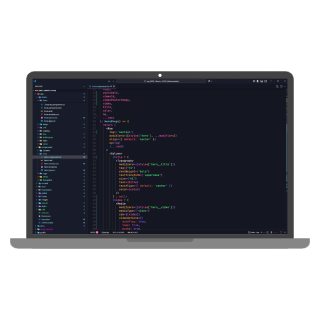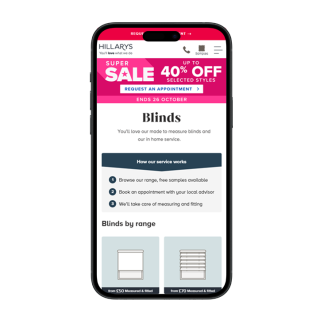Overview
I worked with Code Computer Love on the rebuild of Hillarys Blinds, one of the UK’s leading window furnishing brands. The project aimed to replace their legacy Sitecore monolith with a modern, scalable architecture using Next.js and Prismic. It was a fantastic experience to work with a highly skilled, collaborative team in an environment where code quality, review processes, and shared knowledge were paramount.




Challenges
Prismic was both a powerful and challenging CMS to work with. Its “slice” model differs from traditional component-driven development, often producing semi-server-side structures that required careful handling when split between server and client logic. This demanded a clear understanding of Next.js server and client component boundaries, ensuring predictable rendering and maintainable code.
Another challenge was restructuring content flows to better serve editors and users. For example, the blog previously combined authors and posts into a single page, duplicating author details across multiple entries. I worked with the client to design a more flexible content model: separating posts and author pages into distinct entities. This gave editors the ability to manage richer, detached author profiles and link them directly to posts – improving both workflow and user experience.
CMS
Prismic was used as the content source, feeding directly into the Next.js application via its slice-based model. While less “pure headless” than other CMSs, Prismic still allowed for a structured and reusable approach. Content was mapped carefully to typed components in the Next.js codebase, giving editors flexibility while preserving consistency across the site.
Frontend
The site was developed with Next.js and TypeScript, underpinned by a tightly typed custom framework created by the agency. My work focused on building and refining components that leveraged the full benefits of TypeScript – strong typing, error prevention, and clear contracts between slices and components.
This level of type safety was invaluable on such a large, multi-developer project, reducing bugs and making the codebase easier to scale. It also ensured future developers could extend or refactor confidently without breaking existing functionality.
I particularly enjoyed working with Next.js server and client components. Knowing when to keep logic server-rendered for performance and SEO, and when to shift to client-side for interactivity, was key to delivering performant and reliable user experiences at scale.
Collaboration
Collaboration with both the client and the agency team was central to this project. User stories were clearly defined and iterated on with client input, allowing us to shape flows that improved both editorial control and user-facing features. The pull request workflow was rigorous, with multiple reviewers ensuring all changes met the team’s strict standards. This culture of shared accountability and collaboration created an environment where best practices were embedded in every step.
Deployment
Deployment and infrastructure were managed by the agency. My responsibility was ensuring every contribution was production-ready, fully typed, and aligned with the framework standards so it could be integrated seamlessly into the main branch.
Visit
Hillarys
